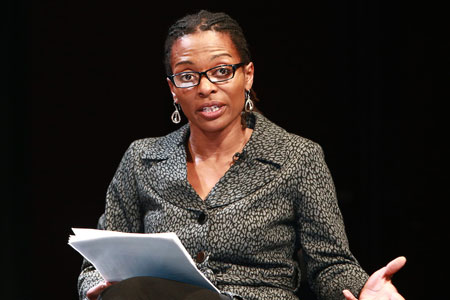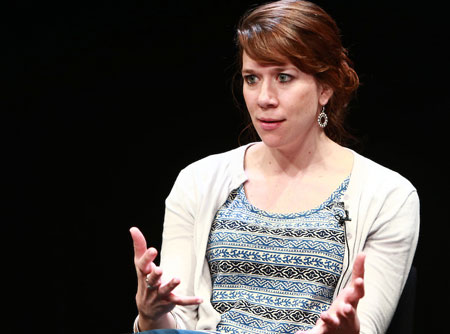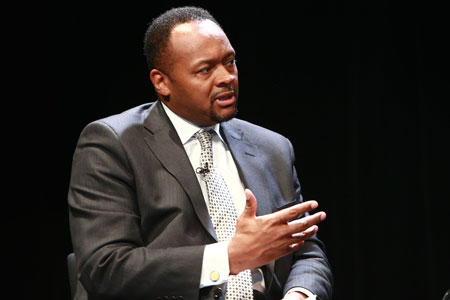What drives youth violence?

Boston-area youth experts explored why guns are still a prevalent part of life for juveniles in urban areas in the final discussion of Emerson’s four-part series, Made in America: Our Gun Violence Culture, on April 25.
The discussion series was launched in the wake of the Newtown, Connecticut, school shooting as a way to promote dialogue on gun violence.
“This is a public health issue,” Emerson President Lee Pelton said in opening remarks before the discussion, held at the Jackie Liebergott Black Box Theater. “It costs this nation about $158 million a year. So it is very, very significant.”
Pelton said 20,000 youths will be injured by gun violence this year, compared to 13,000 who will be diagnosed with cancer.
“Our murder rate is three to five times higher than most industrialized countries,” said panel moderator Kim McLarin, assistant professor for the Writing, Literature and Publishing Department, and frequent commentator on WGBH’s Basic Black. “These young people are not operating in a vacuum [and] we cannot lay this completely at their feet.”
“Gun crime and violence is a very neighborhood-based kind of phenomenon,” said panelist Ed Dolan, commissioner of the Massachusetts Department of Youth Services. “Sixty-five percent of our kids come from 11 neighborhoods.”

